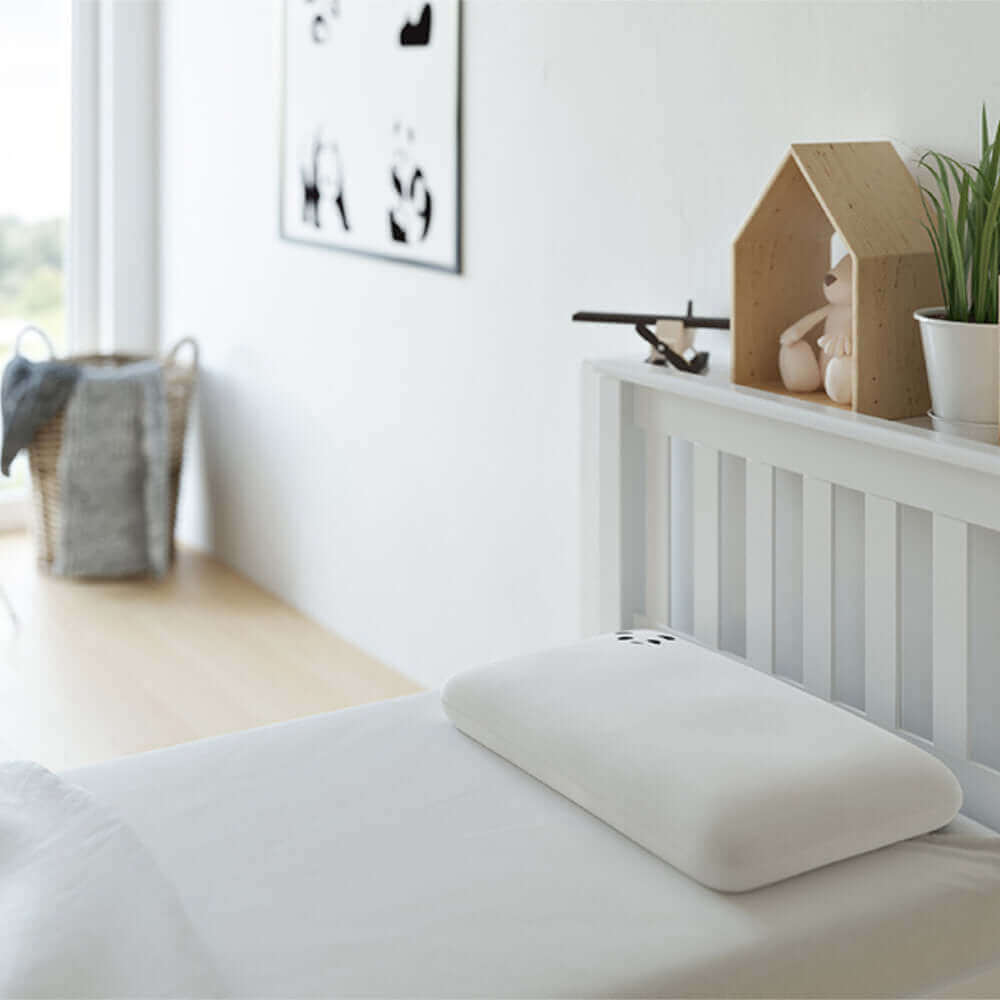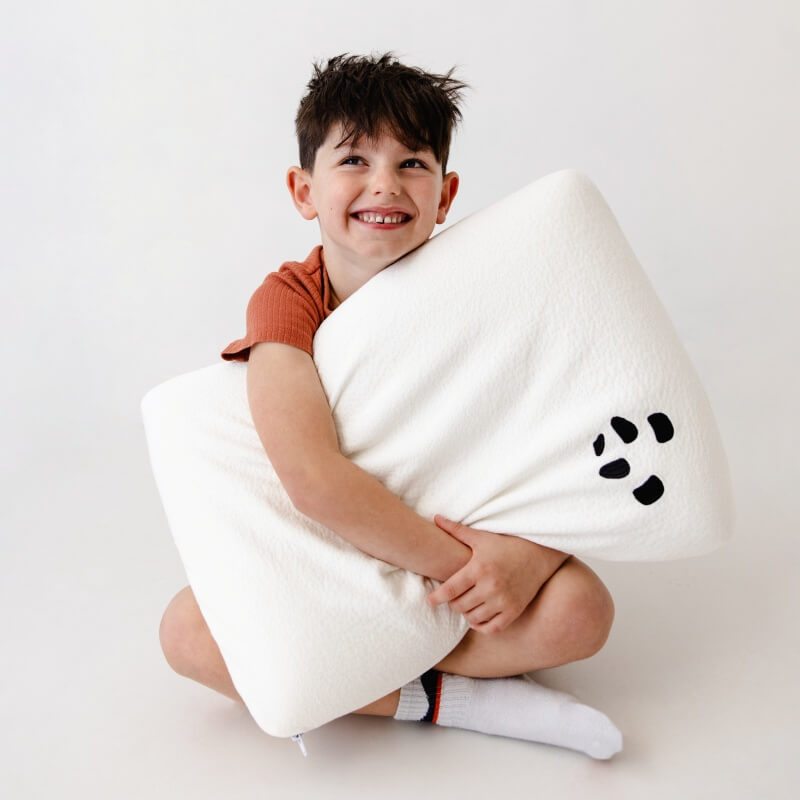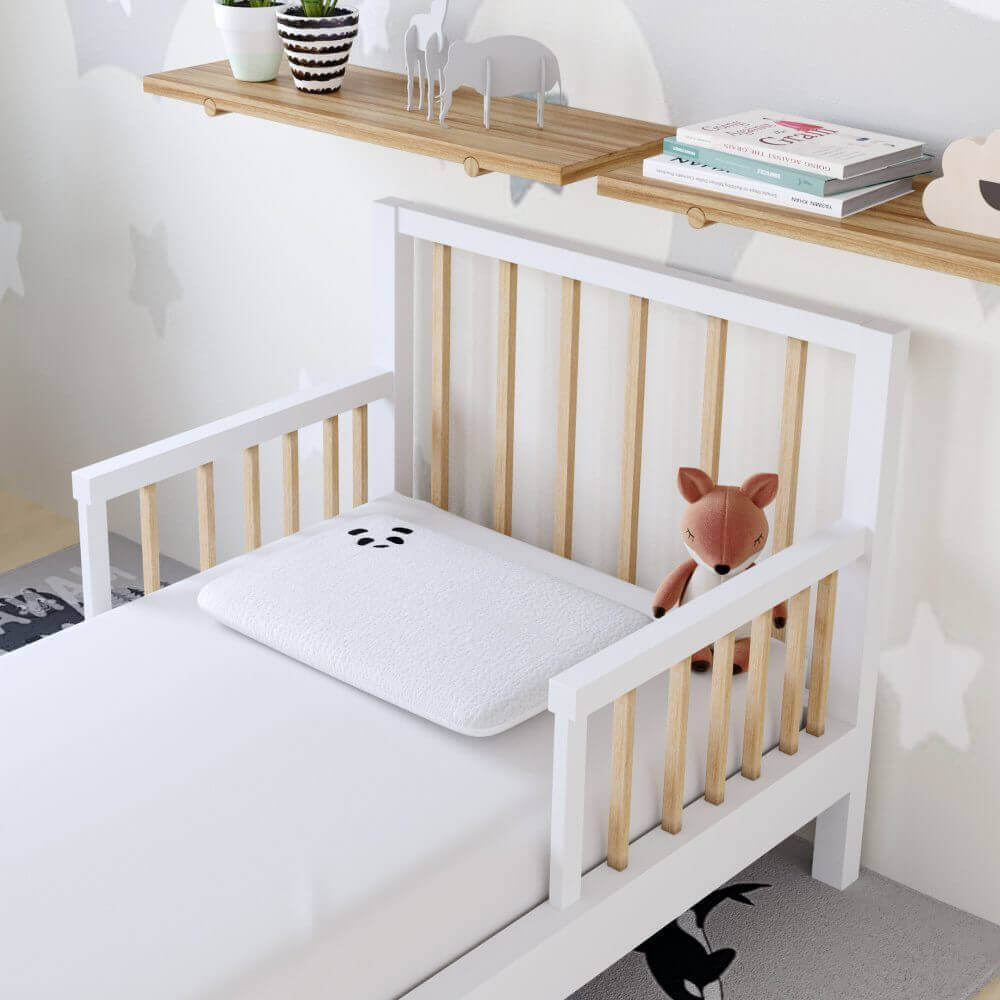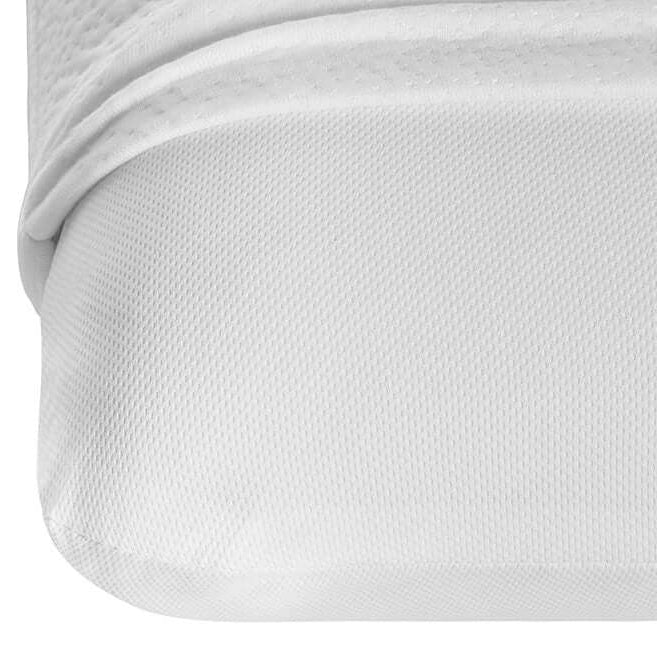Sitzen Sie bequem? Wenn ja, könnte es daran liegen, dass Sie auf einem Memoryschaumstuhl sitzen, der sich Ihrer Körperhaltung anpasst und für Druckentlastung sorgt. Memoryschaum ist bekannt für seine Reaktionsfähigkeit auf Wärme und Gewicht und kann sich auch der Raumtemperatur anpassen, was maßgeblich zu seiner Leistung und seinem Komfort beiträgt. Lehnen Sie sich entspannt zurück, denn wir zeigen Ihnen, wie Memoryschaum auf unterschiedliche Raumtemperaturen reagiert. Wir zeigen Ihnen, wie er Ihr Schlaferlebnis optimiert und die Lebensdauer Ihrer Matratze um Jahre verlängert.
Was ist Memory-Schaum und wie funktioniert er?
Memoryschaum ist flexibel wie ein Sprungbrett und reagiert auf Wärme und Druck. Er passt sich Ihrer Körperform an und kehrt nach Druckentlastung in seine ursprüngliche Form zurück. Ursprünglich von der NASA für Astronautensitze entwickelt, ist er heute die bevorzugte Matratzenart in Großbritannien. Dank der integrierten Temperaturempfindlichkeit des Memoryschaums wird er bei Wärme weicher, passt sich Ihren Körperkonturen an und bietet individuelle Unterstützung. Mit zunehmender Erwärmung wird der Schaum geschmeidiger, lindert Druckstellen und fördert die Ausrichtung der Wirbelsäule.
Die Wissenschaft hinter Memoryschaum und Temperatursensibilität
Wenn es um Memoryschaum geht, ist es eine Wissenschaft für sich, die Dinge genau richtig zu machen, um maßgeschneiderten Komfort und Halt zu gewährleisten …
Wie die Temperatur die Festigkeit von Memoryschaum beeinflusst
Sie fragen sich vielleicht, ob sich Memoryschaum bei steigender Temperatur verändert. Da Memoryschaum immer beliebter wird, untersuchen wir nun, wie sich Temperatur auf Memoryschaum auswirkt. Wie beeinflusst Wärme die Qualität von Memoryschaum? Memoryschaum reagiert dank seiner einzigartigen viskoelastischen Eigenschaften sehr gut auf Temperaturschwankungen. Bei wärmeren Temperaturen entspannt die Wärme – sei es von Ihrem Körper oder der Umgebung – die Molekülketten des Schaums und macht ihn geschmeidiger. Dieser weichmachende Effekt ermöglicht es dem Schaum, sich besser an Ihren Körper anzupassen, was für bessere Druckentlastung und individuellen Komfort sorgt.
In kühleren Umgebungen verdichtet sich die Molekularstruktur des Schaumstoffs, wodurch er fester und weniger reaktionsfähig wird. Diese erhöhte Festigkeit kann zwar eine robuste Unterstützung bieten, kann aber auch die Fähigkeit des Materials beeinträchtigen, sich den natürlichen Kurven des Körpers anzupassen.
Der Grad dieser temperaturbedingten Härteschwankungen hängt oft von der Dichte und der spezifischen Zusammensetzung des Schaumstoffs ab. Aus diesem Grund sind in einigen modernen Memoryschaum-Produkten Kühltechnologien oder temperaturregulierende Zusätze integriert, um unter unterschiedlichen Bedingungen eine gleichbleibende Unterstützung und einen Komfort zu gewährleisten.
Saisonale Veränderungen und Memoryschaum Leistung
Während ein Memoryschaumkissen oder eine Memoryschaummatratze das ganze Jahr über verwendet werden kann, gibt es deutliche Unterschiede hinsichtlich der Leistung des Schaumstoffs im Wechsel der Jahreszeiten.
Memoryschaum bei kaltem Wetter
Wie Sie vielleicht schon bemerkt haben, ist die Härte von Memoryschaum bei unterschiedlichen Temperaturen unterschiedlich. Bei kühleren Temperaturen braucht Memoryschaum etwas länger, um seine Festigkeit zu erreichen, und fühlt sich möglicherweise zunächst fester und weniger reaktionsfähig an (genau wie wir an einem frostigen Morgen). Der Schaum braucht möglicherweise länger, um sich an Ihre Körperform anzupassen und den gewünschten Komfort und Halt zu bieten. Die Matratze kann sich bis zum Aufwärmen etwas hart anfühlen. Um die Festigkeit von Memoryschaum und die Reaktionsfähigkeit bei kaltem Wetter zu verbessern, schalten Sie die Heizung ein oder verwenden Sie eine Heizdecke auf niedriger Stufe.
Memory-Schaum bei heißem Wetter
Memoryschaum ist bei Hitze das Gegenteil von Kälte; er wird weicher und anpassungsfähiger. Memoryschaum speichert Wärme sehr gut, weshalb manche Menschen ihn nicht so sehr mögen. Deshalb haben wir unsere Matratzen mit BioCell Foam™ hergestellt, einer Memoryschaum Schicht mit frischem Bambus, die der Wärmespeicherung von herkömmlichem Memoryschaum entgegenwirkt.
Bei herkömmlichen Memoryschaum-Matratzen besteht Überhitzungsgefahr. Wir geben Ihnen daher Tipps, wie Sie im Sommer einen kühlen Kopf bewahren. Ein Ventilator oder eine Lüftungsanlage ist eine gute Lösung. Atmungsaktive Bezüge sorgen für angenehme Frische. Unsere Panda Cloud Bettdecke besteht aus atmungsaktivem Bambus und ist dank unserer Bamboo NanoMicrofibre™ -Technologie ultradünn und leicht. Schlafen Sie wie auf Wolken. Unser Bettwäscheset aus Bambus und französischem Leinen besteht aus luftig leichten, temperaturregulierenden und hoch atmungsaktiven Kissenbezügen und einem Spannbettlaken. Kurz gesagt: das perfekte Schlafpaket.
Faktoren, die die Reaktionsfähigkeit von Memoryschaum beeinflussen
Memoryschaum reagiert nicht unter allen Umständen gleich. Welche Faktoren können also beeinflussen, wie reaktionsfähig er zu einem bestimmten Zeitpunkt ist?
Schaumdichte und -qualität
Neben dem Einfluss von Wetter und Körper beeinflusst auch die Raumtemperatur Memoryschaum. Wenn Sie sich fragen: „Wird Memory-Schaum in warmen Räumen weicher?“, können wir bestätigen, dass er bei warmen Raumtemperaturen weicher wird. Memoryschaum Matratzen können sich an ständig wechselnde Raumtemperaturen anpassen, indem sie die Körperwärme des Schläfers aufnehmen. Unsere Bambus Matratzentopper bestehen aus hochdichtem, orthopädischem Memoryschaum. Er reagiert langsamer auf Temperaturschwankungen, ist aber sehr langlebig und bietet Ihrem Rücken eine bessere Unterstützung. Wenn Sie sich für eine Schaumstoffmatratze oder -auflage mit geringerer Dichte entscheiden, passt sich diese zwar schnell an, ist aber nicht so langlebig.
Zusätzliche Kühltechnologien
Kein Problem! Ein weiterer Pluspunkt unserer Bambus Matratzenauflage ist unsere HydroFoam™ – eine Gel-Technologie, die die Temperatur aktiv reguliert und in warmen Räumen für Memoryschaum-Komfort sorgt. Unser offenzelliger Memory-Schaum sorgt für eine bessere Luftzirkulation. Hypoallergen und natürlich antibakteriell wirkt er wohltuend und angenehm auf der Haut.
So optimieren Sie Memoryschaum für einen angenehmen Schlaf zu jeder Jahreszeit
In unserem Schlafbericht 2024 haben wir festgestellt, dass weniger als 50 % der Briten nicht genug Schlaf bekommen (seufz), und ein Faktor, der sie nachts wach hält, ist die Zimmertemperatur. Die optimale Raumtemperatur für Memory-Schaum liegt zwischen 15 und 20 Grad Celsius. Aber hier ist die gute Nachricht! Memoryschaum Matratzen bieten Ihnen eine temperaturregulierende Wirkung. Unsere Bambus-Matratzenauflagen und unsere Hybrid-Bambus-Matratzen bieten ultimativen Schlafkomfort. Sie stützen Kopf, Nacken und Rücken, sind hoch atmungsaktiv und fördern die Luftzirkulation.
Die Festigkeit Ihrer Matratze können Sie (buchstäblich) mit der Hand testen. Drücken Sie Ihre Hände fest auf die Matratze. Federt der Schaumstoff schnell zurück, ist die Matratze fest. Passt er sich jedoch langsam an und behält seine Form, ist sie weicher. Sie können dies auch überprüfen, indem Sie sich in Ihrer gewohnten Schlafposition auf die Matratze legen. Spüren Sie zu starken Druck auf Schultern, Hüften oder Rücken, könnte die Matratze zu fest für Sie sein. Wenn Sie zu tief ein sinken und sich nur schwer bewegen, ist die Matratze zu formbar. Wachen Sie mit Steifheit und Schmerzen auf, ist dies ein weiteres Anzeichen dafür, dass Ihre Matratze nicht weich genug ist. Ist Ihre aktuelle Matratze zu fest, empfehlen wir Ihnen, eine Matratzenauflage hinzuzufügen, sie zu wärmen oder zu drehen. Ist sie zu nachgiebig, versuchen Sie es mit einer festeren Matratzenauflage wie unserer Bambus Matratzentopper, kühlen Sie den Raum ab oder legen Sie Sperrholz unter Ihre Matratze.
Anpassung des Memoryschaums an Ihr Klima
Denken Sie immer noch über Memoryschaum nach? Wenn Sie Bedenken hinsichtlich der Wärmespeicherung von Memoryschaum haben, empfehlen wir Ihnen, die beste Memoryschaummatratze für Sie und Ihr Klima zu finden. Wenn Sie häufig schwitzen oder in einer warmen Gegend leben, ist unser Bambus Matratzentopper mit HydroFoam™ ideal, um Überhitzung aktiv zu verhindern. Unsere Hybrid-Bambus-Matratzenserie enthält unseren innovativen BioCell Foam™. Wie bereits erwähnt, sind dies die besten Optionen zur Temperaturregulierung. Wenn Ihre Körperwärme auf Memoryschaum trifft, stützt dieser Sie und richtet Ihre Wirbelsäule aus. Bei richtiger Pflege kann eine Memoryschaummatratze Ihren Schlaf über viele Jahre hinweg verbessern.

![[MattressTopper] Panda London Memory Foam Bamboo Mattress Topper package box](http://pandalondon.com/cdn/shop/files/Bamboo_Mattress_Topper_Package_Box.webp?v=1742301823&width=1500)
![[MattressTopper] Panda London Memory Foam Bamboo Mattress Topper on the floor](http://pandalondon.com/cdn/shop/products/Panda-Memory-Foam-Bamboo-Mattress-Topper-Yoga-e1624045454555.jpg?v=1758795458&width=1000)
![[MattressTopper] Bamboo Mattress Topper Lifestyle Image with Memory Foam Pillows Product Page](http://pandalondon.com/cdn/shop/files/Bamboo_Mattress_Topper_Lifestyle_Image_with_Memory_Foam_Pillows_Product_Page.webp?v=1758795458&width=800)
![[MattressTopper] Bamboo Mattress Topper Lifestyle Image with Bamboo Pillows In the Garden room Product Page](http://pandalondon.com/cdn/shop/files/Bamboo_Mattress_Topper_Lifestyle_Image_with_Bamboo_Pillows_In_the_Garden_room_Product_Page.webp?v=1758795458&width=800)
![[MattressTopper] Panda London Memory Foam Bamboo Mattress Topper side](http://pandalondon.com/cdn/shop/files/Mattress_Topper_Isolated_-_resized.jpg?v=1758795458&width=800)
![[HybridMattressPro] Main Image for Hybrid Bamboo Mattress Pro with all awards](http://pandalondon.com/cdn/shop/files/Hybrid_Bamboo_Mattress_Pro_Main_product_Image_with_awards.webp?v=1753971649&width=1000)
![[HybridMattressPro] Breathable Hybrid Bamboo Mattress](http://pandalondon.com/cdn/shop/products/Breathable-Hybrid-Bamboo-Mattress.jpg?v=1753971649&width=1920)
![[HybridMattressPro] Hybrid Bamboo Mattress Pro Cover Zip](http://pandalondon.com/cdn/shop/files/Hybrid_Bamboo_Mattress_Cover.jpg?v=1753971649&width=800)
![[HybridMattressPro] Panda Hybrid Bamboo Mattress Pro](http://pandalondon.com/cdn/shop/files/Hybrid_Bambo_Memory_Foam_Mattress_-_BioCell_Foam_x.jpg?v=1755095108&width=800)
![[HybridMattressPro] Couple on a Hybrid Bamboo Mattress Pro](http://pandalondon.com/cdn/shop/files/Hybrid_Bamboo_Mattress_Couple.jpg?v=1753971649&width=800)
![[CloudDuvet] Panda London The Cloud Bamboo Duvet Packaging](http://pandalondon.com/cdn/shop/products/Panda-London-The-Cloud-Bamboo-Duvet-Panda-Life-scaled_00a651ad-4ca3-4105-b520-12a94c1a4f71.jpg?v=1713363286&width=1920)
![[CloudDuvet] Panda London The Cloud Bamboo Duvet Rolled](http://pandalondon.com/cdn/shop/products/Duvet-Listing-Images03.jpg?v=1713361452&width=1000)
![[CloudDuvet] Panda London The Cloud Bamboo Duvet Girl Huggin a Duvet on the Bed](http://pandalondon.com/cdn/shop/files/Cloud_Bamboo_Duvet_-_Lady_Hugging_it_on_Bed_LifestyleImage.jpg?v=1719327585&width=1000)
![[CloudDuvet] Panda London The Cloud Bamboo Duvet Guy In the Air with Cloud Bamboo Duvet](http://pandalondon.com/cdn/shop/files/GuyonaHybridBambooMattresswithCloudDuvet.jpg?v=1743097928&width=2000)
![[CloudDuvet] Panda Cloud Duvet Winter on the bed lifestyle image](http://pandalondon.com/cdn/shop/files/Panda_Cloud_Duvet_Winter_on_the_Bed_Lifestyle-1_image.jpg?v=1747994959&width=1000)
![[BBWhite] White 100% Bamboo Bedding](http://pandalondon.com/cdn/shop/files/Pure_White_Full_Bed.webp?v=1719581797&width=1000)
![[BBWhite] White 100% Bamboo Bedding Texture](http://pandalondon.com/cdn/shop/files/100_Bamboo_Bedding_-_Pure_White_-_Close_Up_02.webp?v=1762879591&width=1000)
![[BBWhite] White 100% Bamboo Bedding Woman in bed sleeping](http://pandalondon.com/cdn/shop/files/100-Bamboo-Bedding-Set-Pure-White-BB.webp?v=1762879591&width=768)
![[BBWhite] White 100% Bamboo Bedding Woman Duvet cover buttons](http://pandalondon.com/cdn/shop/files/hand_and_buttons_1.webp?v=1762879591&width=1000)
![[BBWhite] White 100% Bamboo Bedding Woman in bed looking and smiling-](http://pandalondon.com/cdn/shop/files/SatonMadeBed-White100_BambooBedding-white_-_BB_SideShot1000x1000.webp?v=1762879591&width=980)
![[BBUrbanGrey] Urban Grey 100% Bamboo Bedding](http://pandalondon.com/cdn/shop/files/Made_Bed_-_Urban_Grey_-_Wide_Shot_2_1_1.webp?v=1762880019&width=1000)
![[BBUrbanGrey] Cloud Duvet Urban Grey 100% Bamboo Bedding Set](http://pandalondon.com/cdn/shop/files/Cloud_Duvet_-_Grey_-_Close_up_2.webp?v=1762880019&width=1000)
![[BBUrbanGrey] Urban Grey 100% Bamboo Bedding Set Woman sitting on the bed](http://pandalondon.com/cdn/shop/files/Sat_in_Bed_-_Grey_100__Bamboo_Bedding_-_Wide_Shot.webp?v=1762880019&width=1000)
![[BBUrbanGrey] Urban Grey 100% Bamboo Bedding Set Woman Duvet buttons Panda London](http://pandalondon.com/cdn/shop/files/hand_buttons_grey_bedding_1.webp?v=1762880019&width=1000)
![[BBUrbanGrey] Woman Sitting on the Bamboo Bedding with coffee](http://pandalondon.com/cdn/shop/files/SatonMadeBed-White100_BambooBedding-SideShot1000x1000.jpg?v=1762880019&width=1000)
![[BBNavyBlue] Deep Sea Navy Blue 100% Bamboo Bedding](http://pandalondon.com/cdn/shop/files/Made_Bed_-_Navy_-_Wide_Shot_3_copy.webp?v=1762879591&width=1000)
![[BBNavyBlue] Deep Sea Navy Blue 100% Bamboo Bedding Texture](http://pandalondon.com/cdn/shop/files/Cloud_Duvet_-_Navy_-_Close_up_2.webp?v=1762880019&width=1000)
![[BBNavyBlue] Deep Sea Navy Blue 100% Bamboo Bedding Woman Sitting on the bed](http://pandalondon.com/cdn/shop/files/Sat_Up_in_Bed_-_Navy_100__Bamboo_Bedding_-_Hands_on_Bed.webp?v=1762880019&width=1000)
![[BBNavyBlue] Deep Sea Navy Blue 100% Bamboo Bedding Duvet Cover Buttons](http://pandalondon.com/cdn/shop/files/Cloud_Duvet_Cover_Buttons_-_Deep_Sea_Navy.webp?v=1762880019&width=1000)
![[BBNavyBlue] Deep Sea Navy Blue 100% Bamboo Bedding Woman sitting on the bed looking away](http://pandalondon.com/cdn/shop/files/SatonMadeBed-White100_BambooBedding-SideShot1000x1000-001.webp?v=1762880019&width=980)
![[BBPink] Vintage Pink Blue 100% Bamboo Bedding](http://pandalondon.com/cdn/shop/files/Made_Bed_-_Pink_-_Wide_Shot_copy.webp?v=1762879591&width=1000)
![[BBPink] Vintage Pink Texture 100% Bamboo Bedding](http://pandalondon.com/cdn/shop/files/Cloud_Duvet_-_Pink_-_Close_up_2.webp?v=1762880019&width=1000)
![[BBPink] Vintage Pink Woman Sitting on the 100% Bamboo Bedding](http://pandalondon.com/cdn/shop/files/Sat_Up_in_Bed_-_Pink_-_Hands_on_Bed.webp?v=1762880019&width=1000)
![[BBPink] Vintage Pink Woman Sitting on the 100% Bamboo Bedding Duvet Cover](http://pandalondon.com/cdn/shop/files/Cloud_Duvet_Cover_Buttons_-_Vintage_Pink.webp?v=1762880019&width=1000)
![[BBPink] Vintage Pink Woman Sitting on the 100% Bamboo Bedding Woman looking far away](http://pandalondon.com/cdn/shop/files/SatonMadeBed-White100_BambooBedding-SideShot1000x1000-001_Vintage_Pink.webp?v=1762880019&width=980)
![[BBGrey] Light Grey 100% Bamboo Bedding](http://pandalondon.com/cdn/shop/files/Made_Bedding_in_Bedroom_-_Urban_Grey_-_Wide_Shot.webp?v=1762879591&width=1000)
![[BBGrey] Light Grey 100% Bamboo Bedding texture](http://pandalondon.com/cdn/shop/files/Texture17.webp?v=1762880019&width=1000)
![[BBGrey] Light Grey 100% Bamboo Bedding with Woman smiling](http://pandalondon.com/cdn/shop/files/Sat_Up_in_Bed_-_Grey_-_Hands_on_Bed.webp?v=1762880019&width=1000)
![[BBGrey] Light Grey 100% Bamboo Bedding with Duvet Cover buttons](http://pandalondon.com/cdn/shop/files/Cloud_Duvet_Cover_Buttons_-_Quiet_Grey.webp?v=1762880019&width=1000)
![[BBGrey] Light Grey 100% Bamboo Bedding with Woman smiling and sitting coffee](http://pandalondon.com/cdn/shop/files/SatonMadeBed-White100_BambooBedding-SideShot1000x1000-002-_Grey.webp?v=1762880019&width=980)
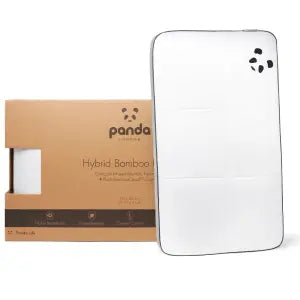 Hybrid Bambuskissen
Hybrid Bambuskissen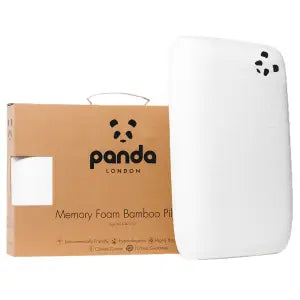 Memory Foam Bambuskissen
Memory Foam Bambuskissen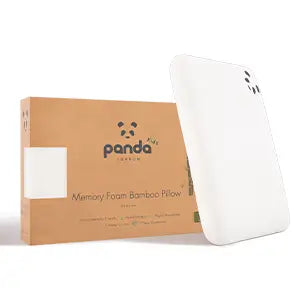 Memory Foam Bambuskissen für Kinder
Memory Foam Bambuskissen für Kinder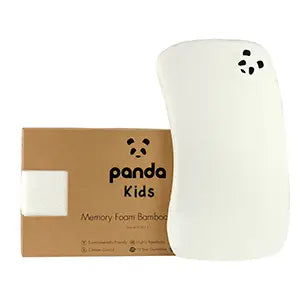 Baby Memory Foam Bambuskissen
Baby Memory Foam Bambuskissen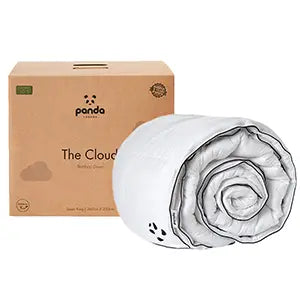 Panda Bettdecke Cloud
Panda Bettdecke Cloud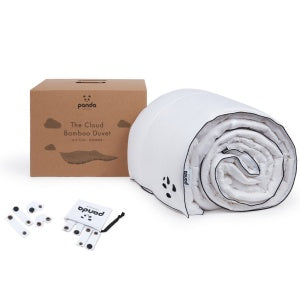 Sommerbettdecke aus Bambus
Sommerbettdecke aus Bambus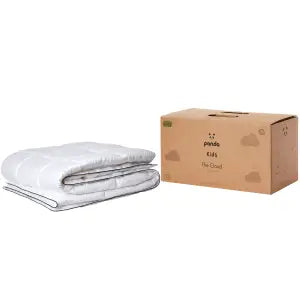 Kinder Cloud Bettdecke
Kinder Cloud Bettdecke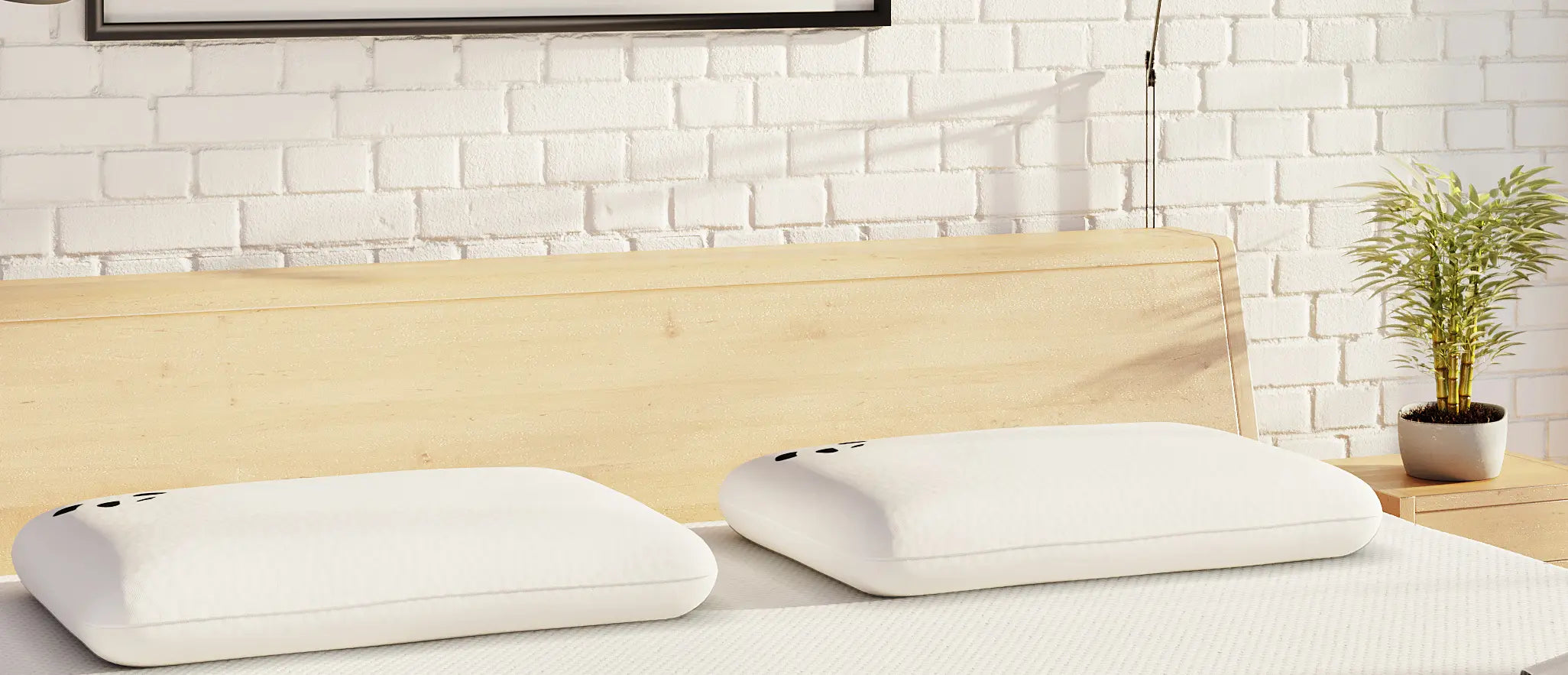
![[HybridPillow] Hybrid Bamboo Pillow - Mattress Campaign](http://pandalondon.com/cdn/shop/products/Hybrid-Bamboo-Pillow-Mattress-Campaign.jpg?crop=region&crop_height=1615&crop_left=152&crop_top=0&crop_width=1615&v=1750023555&width=1920)
![[HybridPillow] Hybrid Pillow with Panda brand marking](http://pandalondon.com/cdn/shop/products/Hybrid-Pillow_8.jpg?v=1750023555&width=1920)
![[HybridPillow] Couples laying on Hybrid Bamboo Pillows](http://pandalondon.com/cdn/shop/files/Hybrid_Bamboo_Pillow_Product.jpg?v=1750023555&width=1000)
![[HybridPillow] Red Hair Girl sleeping on a Hybrid Bamboo Pillow](http://pandalondon.com/cdn/shop/files/Hybrid_Bamboo_Pillow_-_Red_Hair_Girl_Product.jpg?v=1750023555&width=1000)
![[HybridPillow] Guy Hugging Hybrid Bamboo Pillow](http://pandalondon.com/cdn/shop/files/Hybrid-Bamboo-Pillow-Man-holding-the-pillow-1024x1024_jpg.webp?v=1750023555&width=1024)
![[MemoryFoamPillow] Panda Luxury Memory Foam Bamboo product image](http://pandalondon.com/cdn/shop/products/Panda-Memory-Foam-Bamboo-Pillow-Panda-Life-scaled-e1623788835840.jpg?v=1750023574&width=800)
![[MemoryFoamPillow] Panda London Bamboo Memory Foam Pillow](http://pandalondon.com/cdn/shop/files/03_Memory_Foam_Bamboo_Pillow__alt01.jpg?v=1750023574&width=800)
![[MemoryFoamPillow] Panda London Bamboo Memory Foam Pillow girl hugging the pillow](http://pandalondon.com/cdn/shop/files/02_Memory_Foam_Bamboo_Pillow__alt02.jpg?v=1750023574&width=800)
![[MemoryFoamPillow] Panda London Bamboo Memory Foam Pillow on a Panda Topper](http://pandalondon.com/cdn/shop/files/Memory-Foam-Bamboo-Pillow-on-Bed-Topper-and-Adjustable-Straps-Shown-Lifestyle-Square-768x768_png.webp?v=1763983719&width=768)
![[MemoryFoamPillow] Panda London Bamboo Memory Foam Pillow Girl Holding Pillow Lifestyle](http://pandalondon.com/cdn/shop/files/01_Memory_Foam_Bamboo_Pillow__alt04.jpg?v=1763983719&width=800)
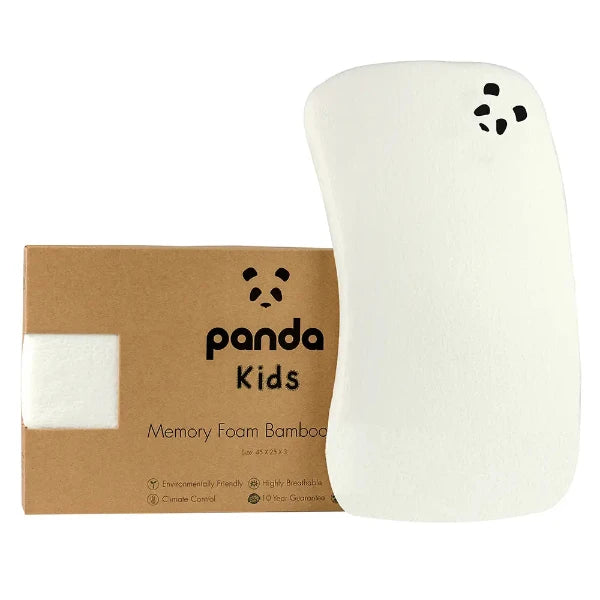
![[Pillowcovers] Baby memory foam bamboo pillow image](http://pandalondon.com/cdn/shop/products/Panda-Memory-Foam-Bamboo-Pillow-Baby.jpg?v=1718207318&width=1536)
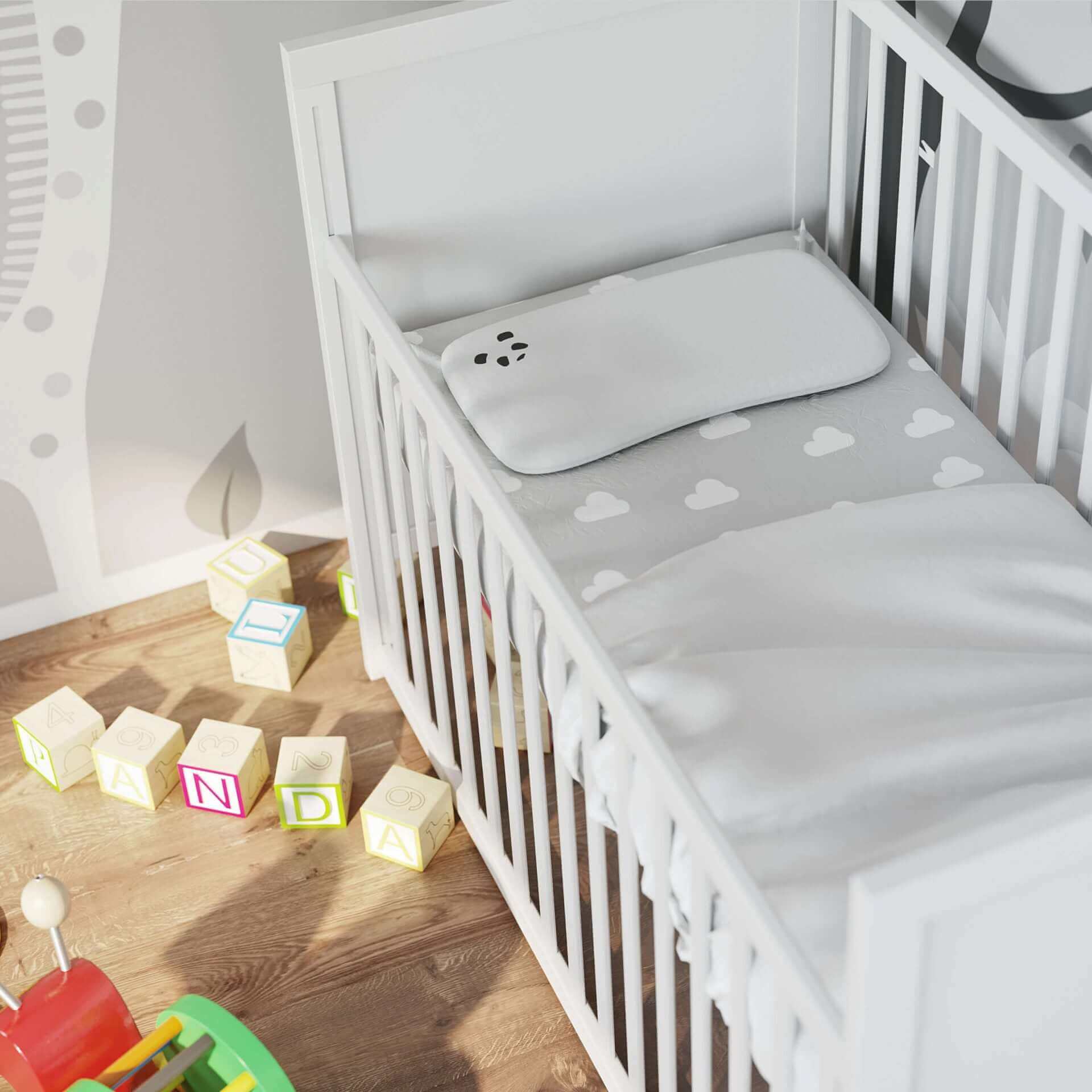
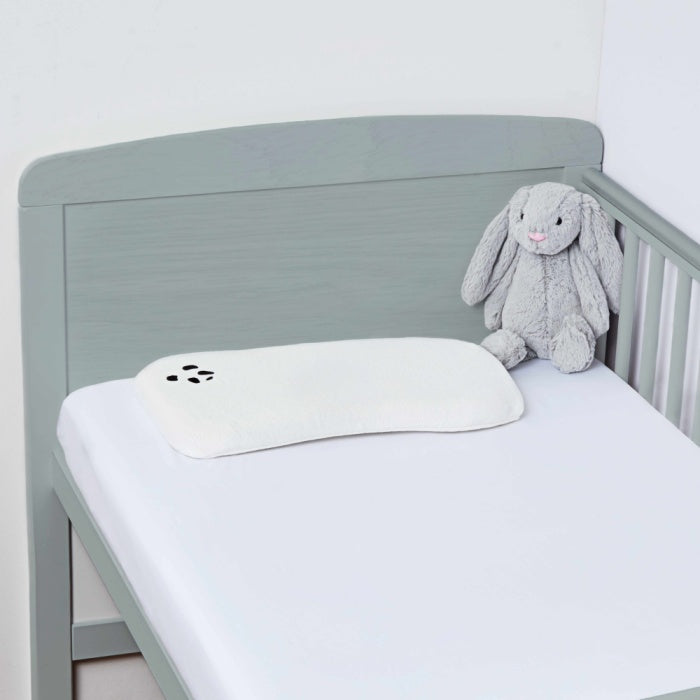
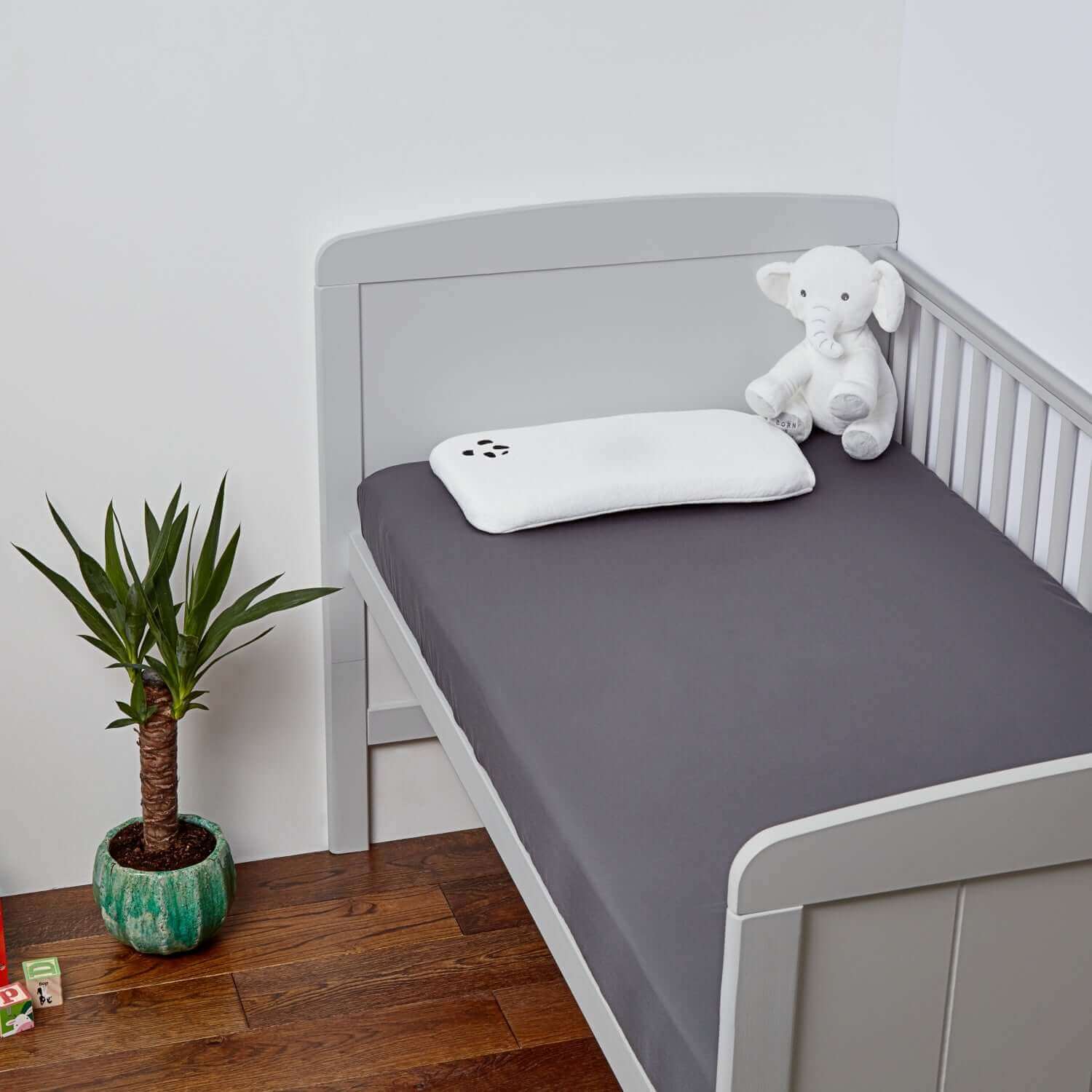
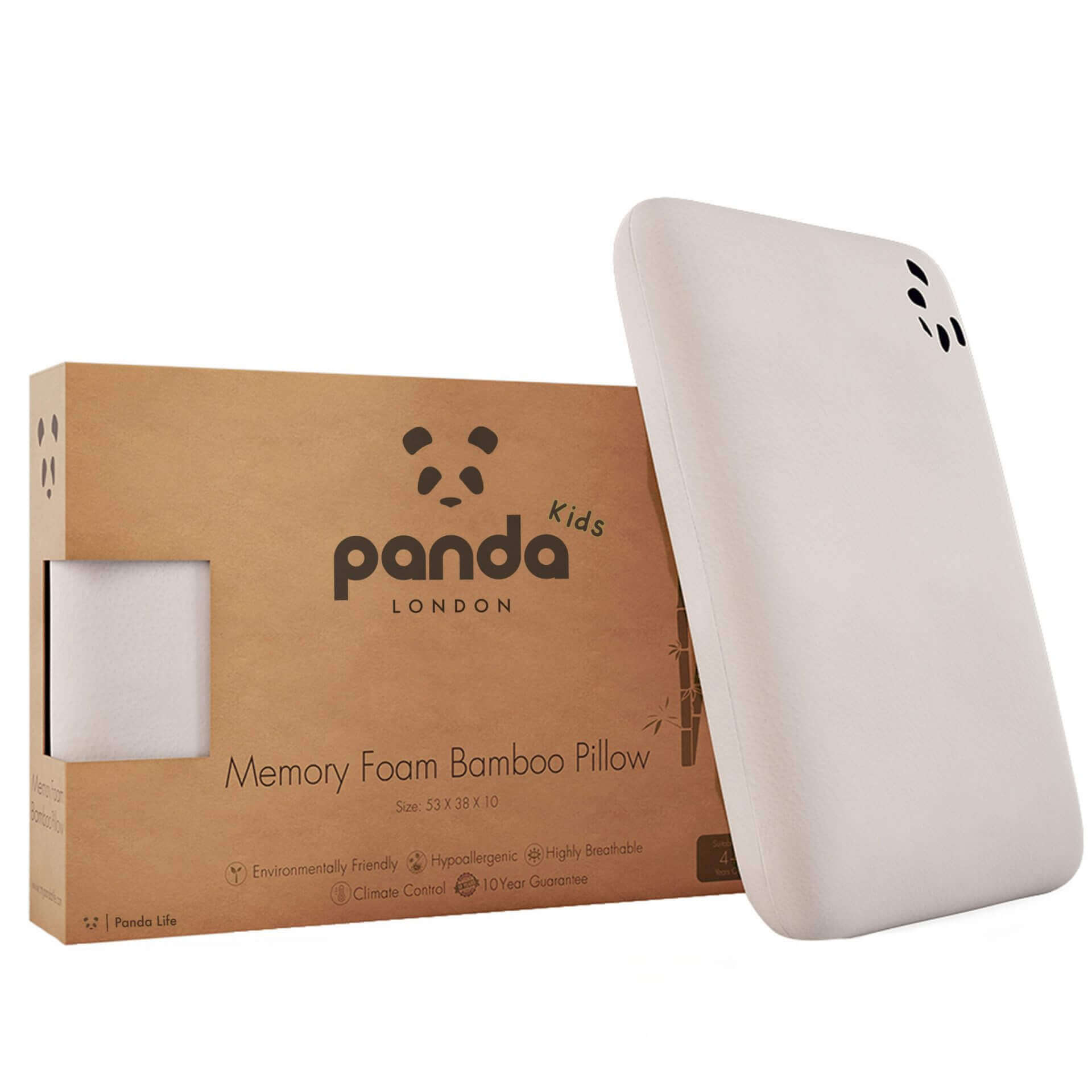
![[Pillowcovers] Pillowcase-Kids-Pillow-White-Background-](http://pandalondon.com/cdn/shop/files/Kids-Pillow-White-Background-Square_jpg.webp?v=1713361847&width=745)
